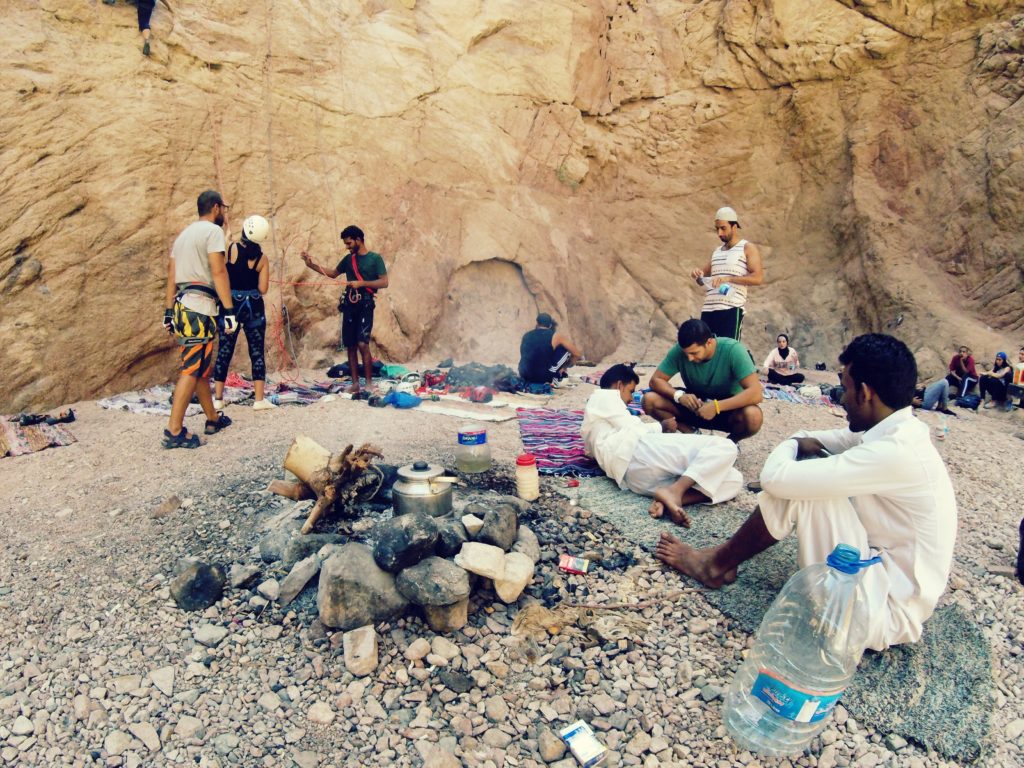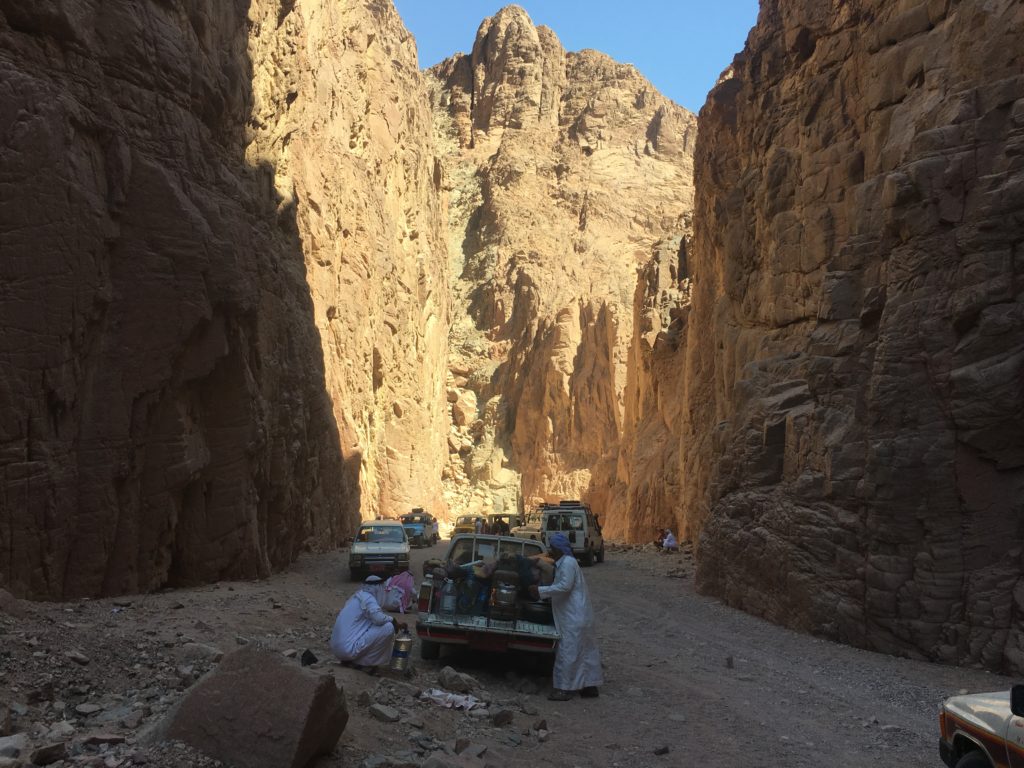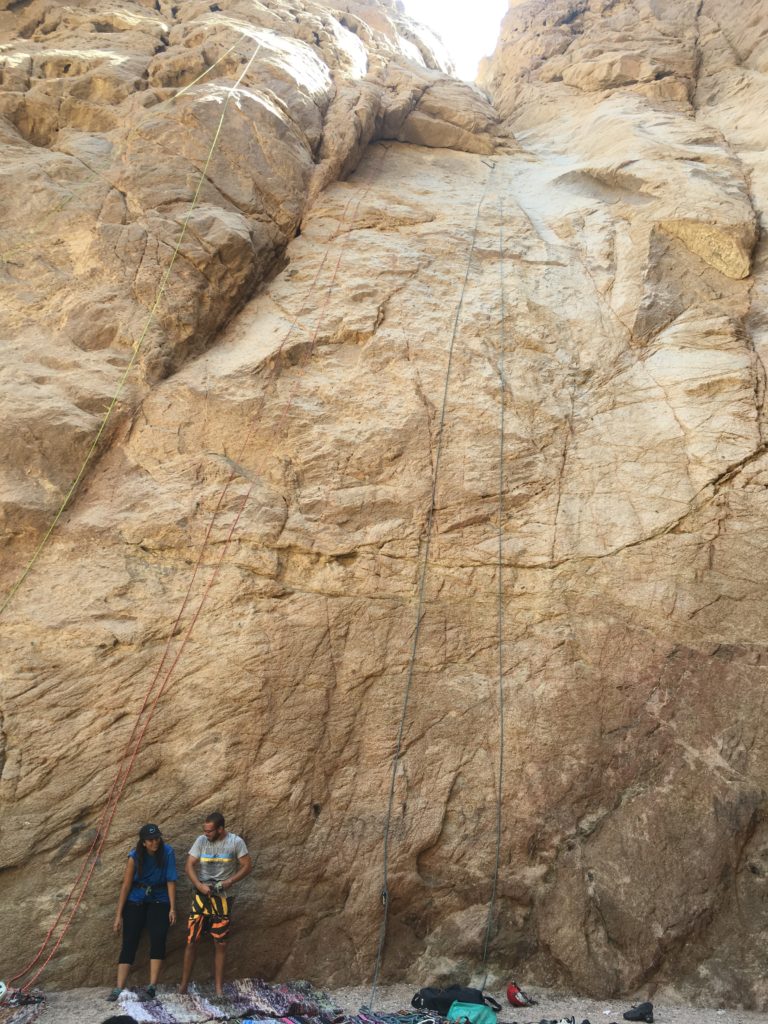“Dahab: City of Magic and Beauty,” a battered steel sign says in both English and Arabic. It rises in an arch over a section of desert highway that feels to me, random. Sand encroaches on the asphalt; tire tracks leading off the road into the yellow beyond further diminish the boundaries of road and desert. The paint is chipped and the sign is dented, but I don’t necessarily disagree.
I am on a long walk. Fifteen kilometers outside of the city of Dahab, Egypt is a complex canyon system. A flat, sandy bottom rises slowly up from sea level into a warren of steep walls of precambrian granite. A lot of it is choss, but a lot of it isn’t. This is Wadi Gnai. Home of the Bedoin, and in the last few decades, some rock climbers as well.

What takes me three hours of walking in sand and brutal sunshine usually takes only a half-hour in the back of a truck. Today, I told myself in a grasp for autonomy, I would walk to Bedoin Garden, a bolted crag deep in the Wadi, and rope solo. In August I bought a plane ticket — four and a half months — to come to Dahab and work for a local guiding company, Desert Divers, as a climbing instructor.

Dahab is a diving mecca. More than fifty dive shops and guide services operate in this relatively small town nestled on the coast of the Red Sea. Through a scuba mask the reef is stunning, and quite literally a few feet from the waterfront path that runs the length of the city. In the evening, the lights of Saudi Arabia twinkle on the horizon and beams from night-divers light the water below.

Magic and Beauty, indeed. Dahab boomed until the Arab Spring crushed incoming flights from Europe and America. Now, as people say, they are on survival mode: foreign tourists are trickling back in while businesses find ways to foster domestic tourism. This is no easy task, as catering to European culture and Egyptian culture is a much different thing. Skeletons of unfinished and abandoned resorts haunt the horizon in every direction. The roads and infrastructure, like the government, are broken.

But this is Egpyt, and people find a way to make it work. Desert Divers has managed to snare the interest of the young professional Egyptian crowd, though the climbing scene here is still in infancy. Most of the route development has been from international tourists who wandered into the Wadi and the interest among young Egyptians appears (from my limited time here) to still be a novelty activity. But this is how things start. In the last group of Egyptians I climbed with a few of them were leading, setting up, and cleaning sport anchors.
I arrive in Bedoin Garden exhausted and more than halfway through my gallon of water. I don’t have much heart left for top-rope soloing after being crushed by the heat, but I set up a short route anyway and run it a few times. It’s pretty wild, being here. Rock climbing in Egypt.
The pace of life has been slow and frustrating at times — vacation purgatory, I call it — but that’s all part of the learning. It’s been ten days. The usual ups and downs and anxieties of being in a new place have happened.
Four months to go.
Leave a Reply